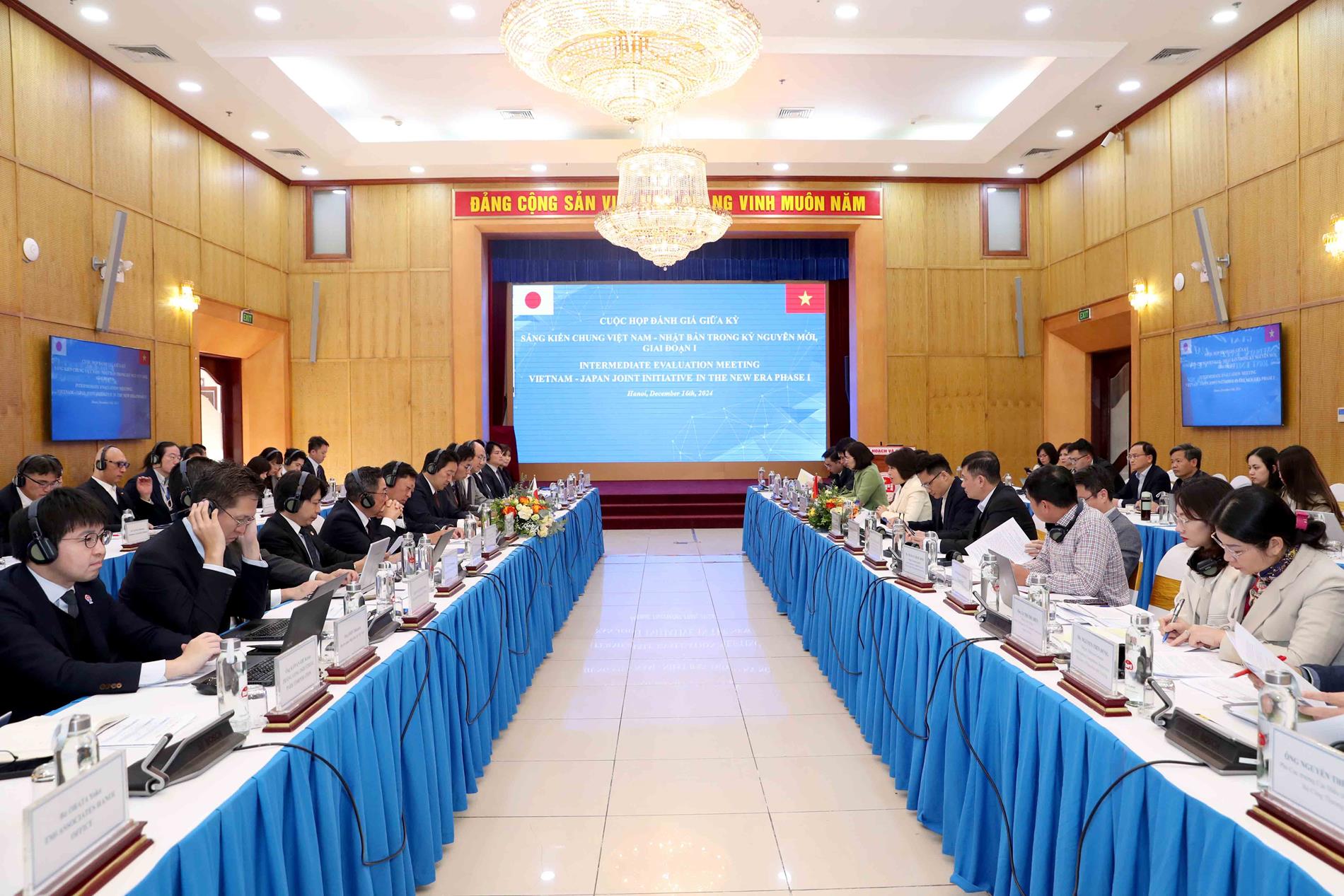(MPI) - Deputy Minister of Planning and Investment Nguyen Thi Bich Ngoc and Deputy Ambassador of Japan to Vietnam Ishikawa Isamu co-chaired a meeting to review mid-term implementation of the Vietnam-Japan joint initiative in the new area, phase 1 in Hanoi on December 16.
 |
| Overview of the meeting. Photo: MPI |
Speaking at the event, Japanese Deputy Ambassador Ishikawa Isamu held that with the “Comprehensive Strategic Partnership for Peace and Prosperity in Asia and the World”, the Vietnam - Japan relationship is at its best. This is an opportunity for the two nations to effectively implement the joint initiative with a new and more effective approach, to propose major orientations and measures for further enhancing bilateral cooperation.
As a major partner in terms of trade, economy and investment and Vietnam’s largest official development assistance (ODA) provider, Japan always wishes to further promote its investment presence in Vietnamese provinces and cities, he added.
Isamu said that Japanese Government and enterprises look forward to witnessing stable cooperation results in some fields like digital transformation, green transition, innovation, and hi-quality human resources development, which are also key pillars in the joint initiative in the new era, and stand ready to assist Vietnam to become a developed and high-income nation by 2045.
He also highlighted Japan’s willingness for long-term cooperation and assistance for Vietnam to address facing challenges.
For her part, MPI Deputy Minister Nguyen Thi Bich Ngoc thanked the close coordination of the Japanese Embassy and relevant agencies within the joint initiative framework. She noted the initiative, launched in 2003, is a long-term effort to build a solid foundation for the two countries’ economic cooperation, as well as serving as an important dialogue forum and a special mechanism between the Vietnamese Government and Japanese investors.
She agreed that with the recent elevation of bilateral ties to the comprehensive strategic partnership for peace and prosperity in Asia and the world, this is a chance for the countries to carry out the joint initiative in the most effective manner, towards solving bottlenecks and speeding up the progress of the initiative’s working groups.
The MPI and other Vietnamese agencies pledged to coordinate with Japan to share the latest information about newly-approved laws, strategies and existing regulations so that both sides can bring up suitable programmes and projects.
At the meeting, representatives of five working groups reviewed the implementation results of the action plan for phase 1 of the joint initiative, and discussed cooperation directions for some key areas such as promoting the Asia Zero Emission Community and green transition (AZEC/GX), and training semiconductor workforce.
Vietnam suggested Japan to strengthen the connection between the two sides’ enterprises so that they explore investment opportunities in the fields of Vietnam’s demand and Japan’s strength such as smart manufacturing, smart cities, digital communications, cyber security, environment, healthcare, semiconductors, hydrogen, and artificial intelligence. They also called for further coordination in hi-added value industry and vocational training institutions to help train the workforce in Vietnam.
The Japanese sides proposed Vietnam build a special mechanism for jointly implementing typical projects, create a model for exchanging and developing semiconductor workforce between the two countries, and issue documents on guiding the implementation of regulations of the laws on investment and enterprises./.
| Phase 1 of the Vietnam - Japan joint initiative in the new era consists of five major groups, namely (1) Promotion of the Asia Zero Emission Community and Green Transformation (AZEC/GX); (2) Innovation and digital transformation (DX); (3) The strengthening of the supply chain, including supporting industries; (4) The training of high-quality workforce; (5) The reform of mechanisms to improve the business climate. |
Bao Linh
Ministry of Planning and Investment